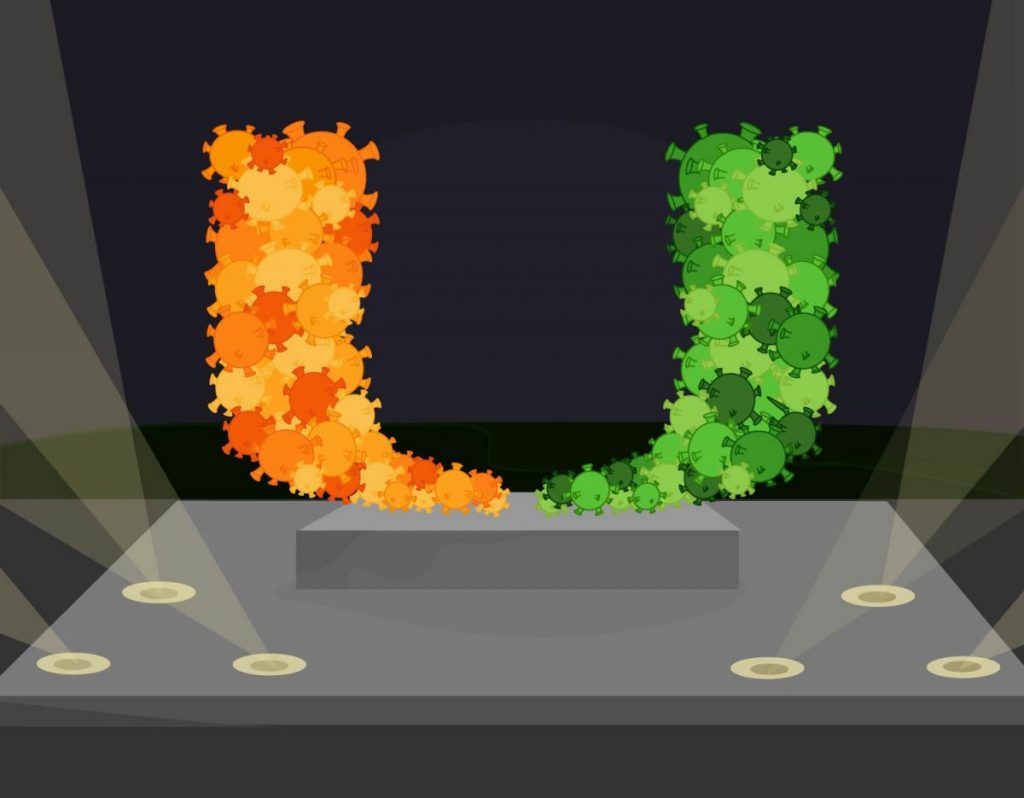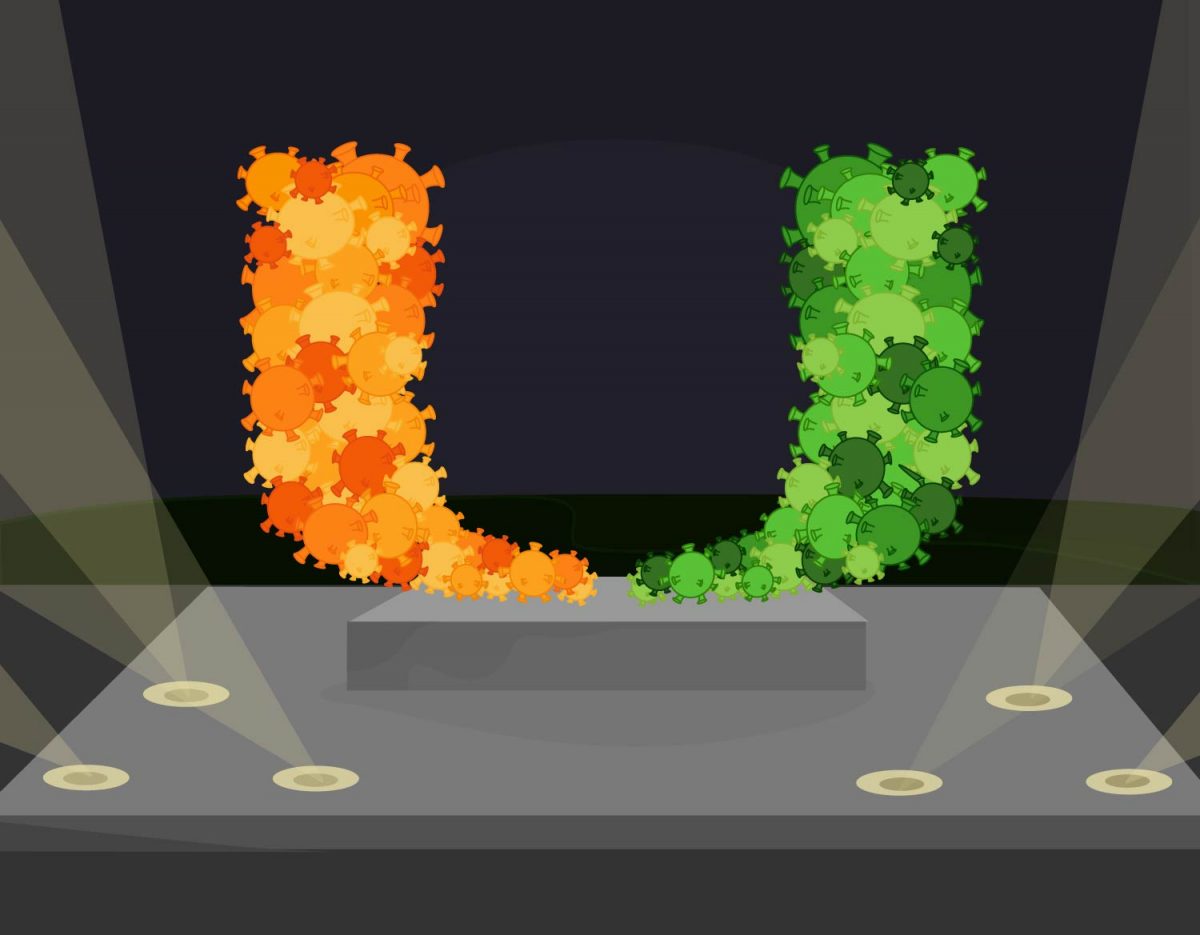
As the coronavirus ravaged the country this fall, the New York Times compiled a database of more than 1,900 universities, including the University of Miami, to track reported COVID-19 cases on college campuses across the country.
According to the dataset on Dec. 18, UM ranked 46 out of the 1,900 universities, indicating it had more COVID cases than more than 97 percent of the schools listed. Of those with higher totals than UM, all but seven have larger student populations.
At the conclusion of the fall semester, with more than 1,500 cumulative cases, the university is hailing this past semester as a success.
“I think the semester has gone exceptionally well,” said vice provost for research and head of UM’s testing and tracing program Erin Kobetz. At the time of the interview, UM had just passed 1,000 total cases. “I’ve been really impressed by the students’ willingness to take collective responsibility for each other and managing the risk of the transmission across the university.”
Cumulative cases is a number often cited in the media and easy for the general public to understand. But when asked about the cumulative total, Kobetz said that going into the semester they were not anticipating an exact number of cumulative cases, rather they were focused on other metrics.
“I’m not looking at the number of cases over the semester as a whole, but looking at the amount of people who are active at any given time,” Kobetz said. “More or less the pattern of infection we have seen across the semester has been very much in line with expectations.”
Kobetz explained that they focus on “active” cases. An active case is triggered when an individual tests positive, which then typically lasts from 10 to 11 days, up until the end of their isolation period.
“We look at that because that’s what helps us better understand the spread of new infection within our target population, which in this case is the university,” Kobetz said.
The highest number of students quarantined at any given time according to UM’s dashboard was 273 on Sept. 18 and Nov. 21.
Kobetz says that compared to similar institutions UM has excelled. The Hurricane asked repeatedly what institutions were being used to benchmark these claims, no examples were provided.
Traditionally, UM uses Duke and Boston College, among others as benchmarks. Both of the schools are located close to metropolitan areas, are private and have close to 15,000 students. Duke had a total of 241 positive cases over the semester and Boston College had 462 positive cases. Both Boston College and Duke had mandatory testing and performed more cumulative tests than UM by large margins.
UM’s testing plan is similar to that of Boston College and Duke. After the semester started, UM made it mandatory for all students that came to campus to be tested repeatedly.
President Julio Frenk also lauded the university for its safe return to campus in his recent end of semester video.
“Many predicted that what we set out to do was impossible, and we pulled together to show what we can accomplish,” Frenk said.
However, many faculty say this semester was anything but a success and take issue with it being marketed as one. They point to low class attendance, low student response rates to emails, high sickness rates and overall high stress levels amongst their students. Of the faculty that were willing to speak for this article, all asked to remain anonymous because they expressed fear of retribution from administration. This includes faculty who are tenured and those who are not.
“This was a disaster, and they are pitching it as a success,” said an assistant professor in the College of Arts and Sciences, who requested anonymity in order to speak candidly. “This was a real epic failure and currently a dishonest presentation of what was a really difficult and disastrous semester.”
After the university announced an in-person fall semester, many faculty and staff openly questioned that decision and expressed frustration with how the decision was made, arguing it was unilaterally imposed on them. At the start of the semester many faculty were forced into teaching in person and UM ignored a letter signed by more than 500 faculty members.
UM has consistently stated that the decision to reopen was based on providing the highest quality educational experience possible in an unprecedented time. The faculty members that spoke on the matter acknowledged as much, but they called UM’s motivations into question.
“They run on a corporate model where the student is viewed as a customer or client, and they wanted those housing dollars,” said a professor. UM’s $153 million Lakeside Village housed students for the first time this semester, where students pay as high as $11,650 a semester to live in the new dorms. “They wanted money more than protecting the health and well being of people in our community. . . education needs to be placed over housing dollars.”
Of the faculty spoken to, all felt that UM’s motivation to reopen were financially based.
Now, with a semester completed, faculty say many of the problems were predictable as students failed to obey the university guidelines.
“Students disappointed us as we expected them to,” said an anonymous professor in the Miami Herbert Business School. The professor also believes that the administration expected students to behave this way and were dishonest when they said otherwise.
While the university stated that there was not a single case of infection spreading within the classroom environment and students generally obeyed mask guidelines on campus, faculty that spoke with The Hurricane said the classrooms were not the primary area of concern, rather it was how students behaved off campus.
Soon after students returned to campus, pictures of parties in dorms went viral. Off campus was no different. UM suspended Sigma Chi for illicit parties, and Pi Kappa Alpha was put on probation a month after fraternity parties were first reported. After these punishments, fraternities and others continued to host parties across the Miami area and in Key West. During Halloween, large numbers of students flocked to Key West where they packed into bars and ignored COVID-19 protocols. After Halloween, UM acknowledged the behavior calling it “inappropriate” in a university-wide email. Although the email threatened punishment, no further communication about the incidents were sent.
As student misbehavior continued and UM stuck by its process and kept promoting the semester as a success, UM community members took to social media to express their frustration. A meme of music artist Prince reading “I will die 4 U” with the U as UM’s logo became the public profile picture of many faculty members on social media pages. The meme first originated over the summer after UM professors were denied the choice of teaching remotely unless they were able to provide a medical excuse. Additionally, anonymous accounts have popped up criticizing UM’s behavior.
One of those Instagram accounts, “iwould_die_4u” organized a “die in” protest in response to UM reopening and in the months since has continued to push a message that UM is responsible for the ongoing spread of COVID-19 and has “failed students, faculty, staff and workers.”
The creators of the account, members of the UM community, responded to questions over email explaining why they are upset with UM leadership. Their responses were similar to that of other faculty.
“We knew, as everyone did, that bringing students to live on campus would pose great risks to their health and to the health of those in Miami and South Florida, more generally,” the email stated. “We believe that normalizing or ignoring infection and transmission, as has been done both at UM and across the country, is a moral and a political failure, one that has cost many, many people their lives.”
The group in the email repeatedly blamed UM for normalizing COVID-19 infections and for putting students, faculty and staff at risk.
“The reopening was about money,” said the runners of the aforementioned Instagram in their email. “It was not about what was best for any member of the university community. The university has put profits over people.”
UM has continued to state that the spring semester will be similar to fall.
Naomi Feinstein and Emma Dominguez contributed to the reporting for this article.






